A ‘Quantum Lie Detector’ Confirms Nonlocal Computation — & Why Correlation Depth Matters.
Correlation Depth Powers Reality
🌊First Waves
We’ve crossed a threshold.
Quantum chips are now so capable that the usual checks don’t work. So physicists built a quantum lie detector—a way to verify whether a device is truly drawing power from nonlocal relationships, or just “faking it” with classical tricks.
Measuring a quantum state collapses it. You can’t just “peek inside” a running chip to see what it’s doing without disturbing the very thing you want to inspect.
You can’t make backup copies. No-cloning means you can’t duplicate an unknown quantum state to study it from different angles. Classical debugging tricks don’t work.
Qubits are fragile: They decohere and crosstalk, and their calibrations drift with temperature, time, and even recent operations. They drift out of spec quickly.
Trying to measure a quantum processor is like studying a soap‑bubble sculpture in the dark—shine a torch and you pop the bubbles. 🫧🤔

Each time you add one more qubit, the amount of information needed to describe the chip’s state doubles. After around forty to fifty qubits, the volume is so enormous that even the biggest supercomputers can’t fully simulate it.
So, how can you verify what’s happening without destroying it?
Enter the lie detector!
Just as a polygraph detects physiological "tells," this test identifies physical indicators of nonlocality (such as energy below a proven classical bound or certified many-body Bell depth) that are difficult to fake. If these signs are present, the "I'm quantum" claim holds; if not, it is questionable.
A polygraph provides suggestive, but not definitive, results—better than chance but far from perfect. In contrast, this test offers "tells" backed by mathematical guarantees and substantial statistical differences.
The “quantum lie detector” verifies that relationships (nonlocal correlations), not classical shortcuts, are doing the work—exactly the correlation depth claim made by the Recognition Loops Mirror Paradigm.
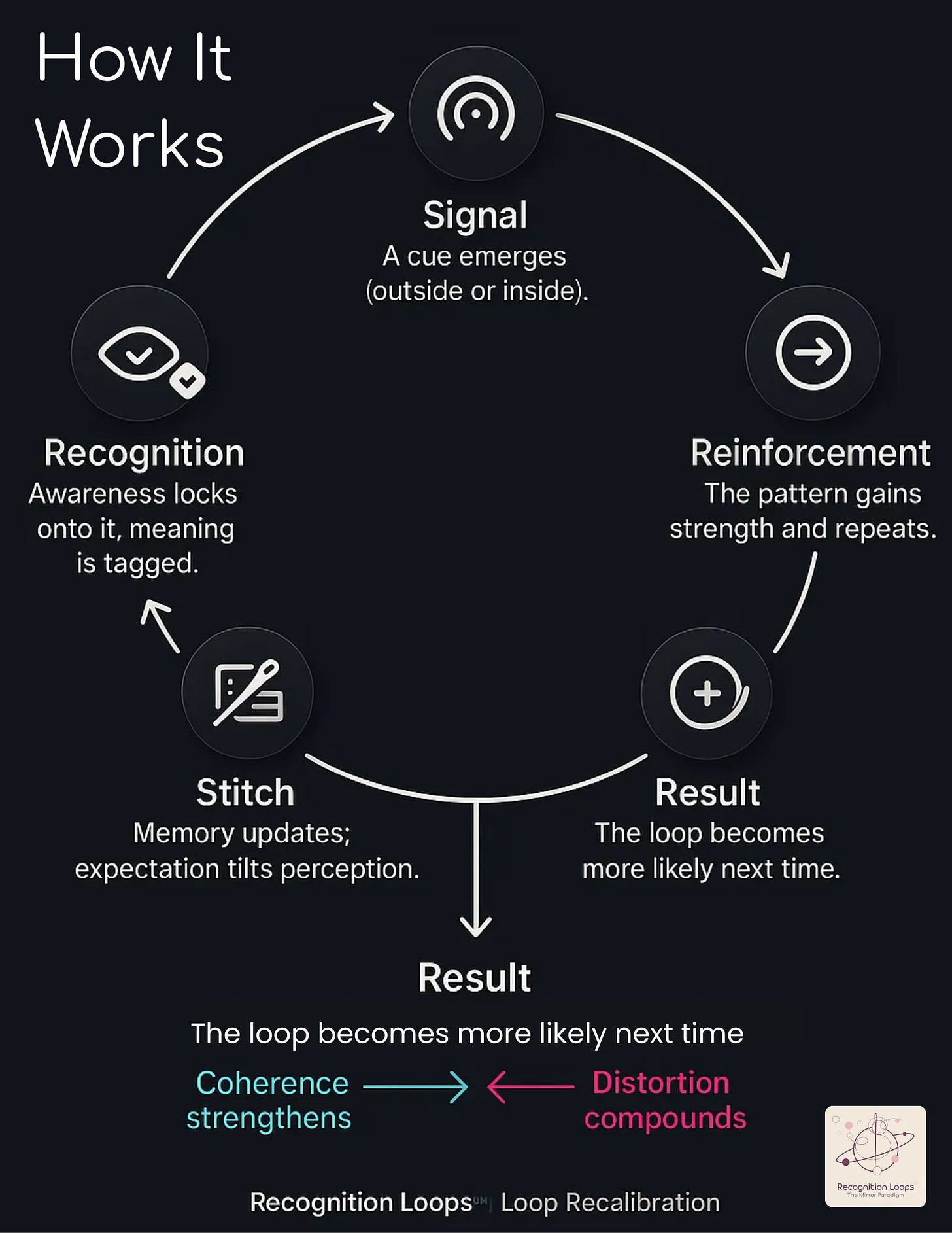
Read the article in Live Science here 🔽
Join Recognition Loops™ for deep dives, Reality Weaver’s Magic, and step-by-step tools to simplify → realign → scale… and recalibrate!
🪞Recognition Loop Mirror Paradigm Metaphysics
Recognition Loops metaphysics suggests that reality is constructed from webs of relationship, not objects.
Reality forms from feedback loops—patterns that observe and stabilise each other until a coherent structure emerges.
Consciousness as the Foundational Structure (CFS) is the loom that binds our recognitions; space, time, and matter are the woven outcomes.
Stable patterns continue to “recognise” and reinforce each other. When mutual reinforcement locks in, you get a solid something: an atom, a reaction, a person, a society.
Identities, matter, minds, and cultures are all stable (phase-locked) loops at various scales.
When Recognition Loops phase-lock coherently, potentials increase and new capabilities arise; when they desynchronise, we unravel into incoherence and experience collapse into social and mental “noise” and ultimately, dissolution.
Time is stitched together by repeated acts of recognition (Stitches in Time), and evolution is the optimisation of coherence—organic systems learning to relate more effectively.
The feeling of time comes from repeated recognitions linking moments together.
The universe tends towards ideal alignment—harmonious or mutually beneficial relationships—by strengthening the most coherent patterns.
This alignment favours our Five Fundamental Needs (5FN) and attracts us to relational states that fulfil them.

The Five Fundamental Needs: Why Your Relationships Are the Thread Holding Reality Together
🧵🔥 What If Your Deepest Needs Are Being Ignored?
Life (consciousness experience) evolves by balancing harmony (stability) and diversity (introducing novelty) through Recognition Loops.
The Recognition Loops Mirror Paradigm (RLMP) thesis suggests that relationships drive capability, making an operational claim that we can measure against the quantum “lie detector”.
☯️ Intrinsic & Extrinsic Sensitivity: The Recognition Field Matrix
🌊 The Hidden Thread You’ve Always Felt
☑️ The Traditional View
A recent landmark study created a ‘quantum lie detector’ to verify when a quantum chip is tapping genuine ‘spooky’ correlations rather than clever classical tricks.
They measured how many qubits were genuinely linked at once (the correlation depth). They showed that more depth + more coherence → better performance, beating the best possible classical limits.
Physicists demonstrated a practical method for verifying genuine quantum behaviour in a large quantum processor. Using a 73‑qubit superconducting device trained via a variational quantum circuit, the team prepared a low‑energy state whose measured energy fell below the best classical bound by 48 standard deviations — a statistical gap that rules out classical cheating.
They further confirmed genuine multipartite Bell correlations among up to 24 qubits within the larger system.
That gives us a simple dial to watch: correlation depth. Turn up the dial, and tasks that rely on global constraints should show threshold-like, more-than-linear gains.
The practical implication is to engineer for correlation depth rather than just size. Designs that create strong, long-range, coherent links will phase-lock earlier and by more.
Recognition Loops says relationships are the power source—coherence is the currency, and correlation depth is how much you can spend.
The quantum lie detector test shows that nonlocal relational structure—specifically, multipartite Bell correlation depth—is the causal resource behind the observed performance.
In the experiment, capability increased with correlation depth and coherence, as certified by a Bell-operator energy witness (via VQC) whose measured energy fell below the best-possible classical bound by 48σ.
That makes correlation depth a practical order parameter —a knob you can turn and track against performance, precisely the dial RLMP says matters most!
It also makes RLMP falsifiable in the right way.
If the framing is correct, then as certified depth climbs (16 → 24 → 32…), results on tasks that reward global constraints shouldn’t just improve—they should show threshold-like, super-linear gains.
Recognition Loops guides reality architecture not only for quantum computing but also for understanding reality and experiencing our lives.
Designs and layouts that foster long-range, coherent links should perform far better—and much earlier—than those that don’t, even with the same qubit count and gate budget.
Qubits = Headcount. (Sense = Intrinsic & Extrinsic Sensitivity + individual stability.) More people mean more potential degrees of freedom—not more isolated power sources.
Gate Budget = Time & Effort. Raise shared awareness (correlation depth), and progress accelerates in leaps, not steps.
This test gives engineers—and reality weavers—a concrete blueprint: engineer for correlation depth, not just scale.
It aligns with the Recognition Loops Mirror Paradigm™ (RLMP), which holds that relationships structure reality. Quantum computation works when correlations—relationships—are optimally coherent and nonlocal.
The “lie detector” result plunged far below the maximum any classical simulation could reach—but by 48 standard deviations. That’s enormous.
Researchers also verified nonlocal Bell-type correlations across groups of up to 24 qubits within the 73-qubit state. Together, these findings serve as a genuine “quantum lie detector,” confirming that the device used actual quantum mechanics to compute.
🔎 The Mirror Paradigm Interpretation
Headcount ≈ Qubit Count. Range of Awareness ≈ Correlation Depth.
It’s the quality and range of shared awareness (nonlocal coupling), not just the number of people or qubits, that drives threshold-like gains.
Same headcount, same time budget—raise shared awareness (correlation depth), and you win in leaps, not steps.
These charts show how the principles that make quantum computers powerful—such as coherence, correlation, and entanglement—mirror those that make human systems, teams, relationships and consciousness powerful.
In a quantum chip, qubits interact and synchronise through shared relationships (entanglement), allowing the whole system to solve problems no single qubit could.
In human terms, people act like qubits: each person adds potential, but true power comes from how well their conscious minds are linked. When relationships are coherent, awareness expands across the group, and breakthroughs occur that no individual could achieve alone.
The second chart zooms in on the practical side—how human behaviours and group dynamics map to the fine-tuning of a quantum device.
Just as engineers reduce noise, maintain calibration, and manage gate operations to keep a quantum computer performing at its peak, humans must manage energy, communication, and alignment—stress, distorting sensory inputs, or unmet needs act like “noise,” reducing coherence.
Clear shared goals, trust, and context keep every system tuned.
In all worlds, success depends less on the number of components and more on the quality of their relationships.
Qubits = People: More isn’t always better; connection quality matters.
Correlation Depth = Shared Awareness: The wider the coherent link, the greater the system's overall capability.
Gates = Interactions: Every exchange updates the system.
Coherence = Trust & Emotional Stability: Keeps the system aligned.
Noise = Conflict & Disconnection: Fragmentation lowers performance.
Calibration = Rituals & Clear Goals: Maintains alignment over time.
Error Correction = Psychological Safety: Enables resilience after mistakes.
Bell-operator energy witness (via VQC) = Measurable Outcomes: Proof that actual coherence (not busyness) drives results.
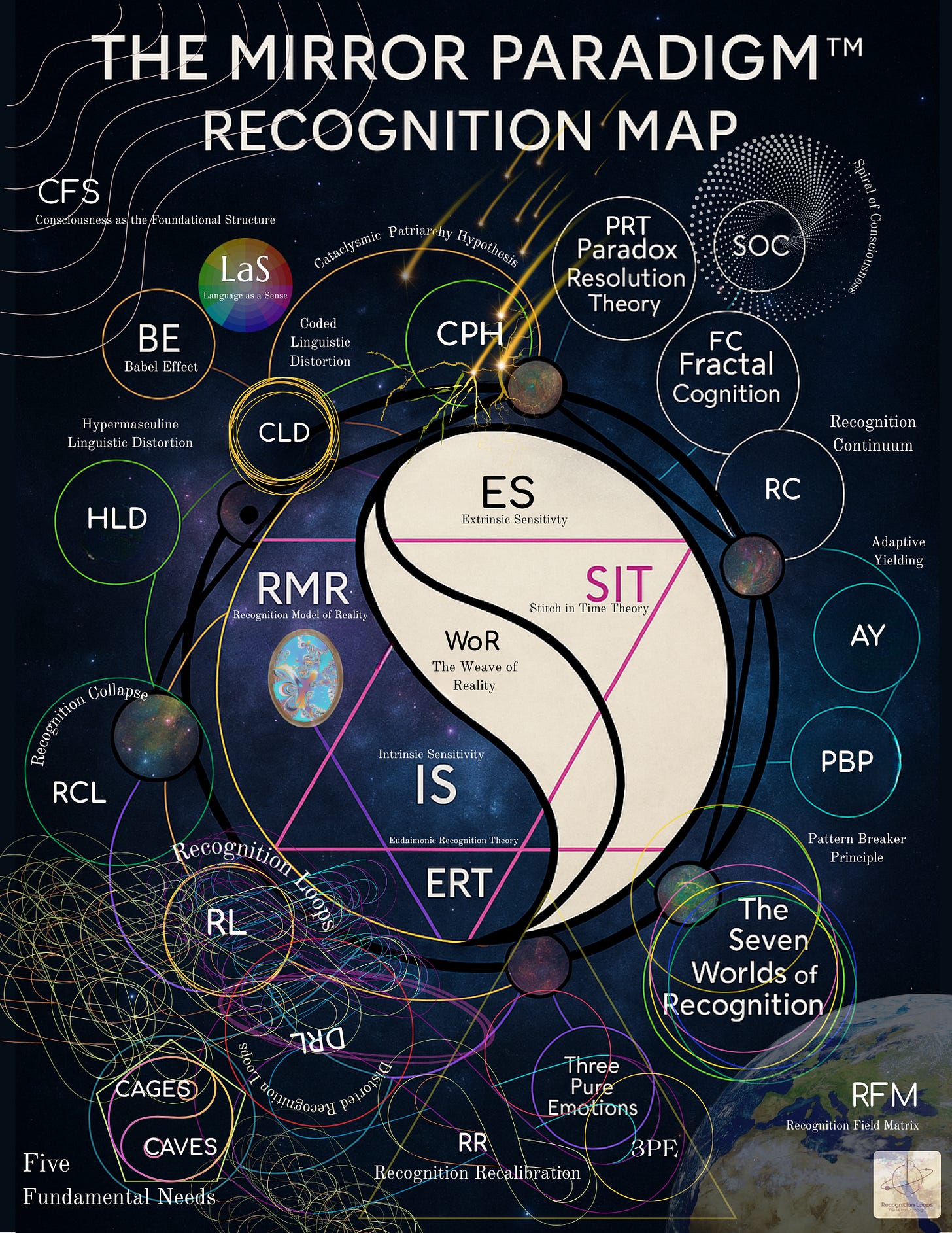
Recognition Loops (RMR/RFM): The training loop — measure → classical optimiser → update → measure — functions as a living Recognition Loop.
Each iteration refines patterns until global coherence locks in.
The system “learns” through recognition, sculpting order from feedback until structure stabilises.
Coherence Optimisation (ERT): Through this process, the device continually rearranges its internal relationships to minimise energy — an exact physical expression of Eudaimonic Recognition Theory (ERT).
In both machines and minds, intelligence emerges by finding the most coherent configuration under given constraints.
Stitch in Time (SIT): The low-energy state produced by the system doesn’t just exist in a single moment — it’s stitched across qubits and timesteps into one unified, globally constrained pattern.
Each recognition connects past and future into a continuous thread of coherence — the fabric of time made tangible.
Consciousness as the Foundational Structure (CFS): We’re not talking about conscious qubits — we’re revealing a deeper symmetry.
When relationships are primary, power emerges.
This mirrors RLMP’s foundational claim that consciousness is the relational loom of existence: everything coherent—from atoms to awareness—is woven through recognition.
Nonlocal Correlation as First-Class Structure: Quantum advantage manifests when qubits form nonlocal, coherent relationships — not from isolated computation, but from interconnection.
As correlation depth increases, so does capability.
The computation space expands because relationships expand — just as awareness expands when recognition deepens.
The Recognition Field Matrix Made Concrete: In this experiment, the Variational Quantum Circuit (VQC) literally performs the Recognition Field Matrix (RFM) in motion.
Classical parameters detect emerging quantum patterns, feed that recognition back, and update the circuit — a feedback engine of relational refinement driving the system toward coherence.
The Recognition Field Matrix (RFM): The Fundamental Structure of Shared Reality
🪞 The Recognition Field Matrix (RFM)
A Material Analogue of Conscious Structuring: What happens here in hardware echoes what happens in consciousness: systems evolve by optimising coherence through recursive recognition.
Whether in minds, societies, or quantum processors, reality upgrades itself by refining the quality of its relationships.
1️⃣ Connection Scales Power.
Just as entangled qubits gain exponential capability when their relationships become coherent, people, ideas, and systems do the same. The strength of your connections determines your Range of Awareness — your personal correlation depth.
When relations tighten across the system, capability explodes. Isolated parts never get you there.
2️⃣ Coherence Creates Intelligence. It is the Currency of Life
Whether in a quantum chip or a human mind, intelligence isn’t about storage — it’s about structure. When Recognition Loops align and energy minimises, patterns stabilise into insight. Coherence isn’t calm; it’s clarity.
The machine optimised coherence — the same rule governing personal, social, and cosmic systems in RLMP.
3️⃣ Reality Is a Relational Engine. Feedback Refines Reality.
The experiment verifies what the Mirror Paradigm suggests: the universe doesn’t compute with things — it computes with relationships. The more harmoniously they recognise one another, the more powerful (stable and diverse) the reality they create.
The classical↔quantum training loop is a living example of Recognition Loops: sense, adjust, improve — until a new order level clicks into place.
🔬The Science Bit
Set-up
A programmable 73-qubit superconducting processor in a honeycomb layout trained via a variational quantum circuit (VQC)*.
The VQC iteratively adjusted the parameters using a classical optimiser to minimise the measured energy.
Witness
Use a Bell-operator energy witness (via VQC) to certify genuine nonlocal correlations without reconstructing the full state.
Results
The measured energy fell below the classical bound by 48σ.
Independent probes—parity oscillations and multiple-quantum coherence—corroborated the claim.
Within the 73-qubit state, the team certified multipartite Bell correlations* up to 24 qubits.
Why energy?
Full state tomography scales horribly; energy is compact, robust, and hard to fake across many qubits.
It offers a scalable way to verify how nonclassical a large processor really is.
🔔 Bell Correlations Without Smoke & Mirrors
Classical physics caps the extent to which separate parts can correlate.
Quantum entanglement breaks those caps, producing correlations that violate Bell inequalities*.
Here, the researchers encoded a Bell-type operator in the Hamiltonian* (energy function) and trained the VQC to prepare a low-energy state expected to fall below the classical threshold—and it did, emphatically.
⚡ Why Energy Is a Reliable Narrator
Compactness. Tomography explodes exponentially; total energy is tractable.
Reliability. Classical correlations struggle to spoof sub-ceiling energy; passing the threshold certifies nonlocality.
Scalability. The method extends to larger qubit counts without exhaustive measurement.
Within the 73-qubit ensemble, at least 24 qubits shared genuine many-body nonlocality—a milestone for demonstrating coherence at scale, where nonlocal structure becomes the computational substrate.
🎛 Order Parameter & Predictions
Hard, testable handle. Treat multipartite Bell correlation depth as the order parameter; track it against global-constraint performance.
Prediction. As certified depth rises (16 → 24 → 32…), expect threshold-like, super-linear gains, not gentle improvements.
Blueprint. Holding qubit count and gate budget constant, architectures that lift long-range coherence win earlier—and by more.
Diagnosis tool. The energy-witness approach maps where coherence collapses, guiding noise mitigation and architecture choices.
🧭What It Means For You
These principles form the backbone of modern quantum verification—showing that real power arises from coherent relationships.
Each mechanism reveals, in technical form, what the RLMP expresses in philosophical form: when relational depth increases, capability multiplies, and reality reorganises around coherence.
Connection scales power. As do all Five Fundamental Needs.
Your capability jumps when your relationships (with people, ideas, and habits) become coherent and aligned. An isolated effort cannot beat well-structured needs-alignment.
🌀🔁Feedback is Everything
Like the VQC loop, use short feedback cycles:
Act (Cue/Signal) → Sense (Response) → Adjust (Reward).
Change your response.
Minimise noise.
Protect the signal. Watch the metric shift.
Repeat until a new level of order clicks.
Optimise for coherence, not busyness, volume, or purely external metrics.
Wins come from lowering your ‘energy’ (friction, noise, incoherence), not from taking more steps, applying more effort, or spending more time.
Simplify, realign, then scale.
When you structure relationships well, you access orders of capability that isolated parts (time, effort, incoherent energy) cannot attain.
When you link with the right people, ideas, and tools (and yes, qubits) so they move in sync, your whole system acts like one well-tuned entity.
This is verification, not a universal speed-up.
The experiment proved the computer was really using quantum effects, not clever shortcuts.
That’s a big deal for trust and measurement.
It doesn’t mean every hard problem in chemistry or cryptography suddenly falls. To reach those breakthroughs, you still need much larger, cleaner machines (with error correction) and the right, task-specific algorithms.
Think of it like confirming the engine is real and powerful; winning every race still takes the high-performance car, the right track, and a skilled driver!
Real World Examples:
• A small, tightly aligned team, group, or nation (clear goal, clean comms) can outperform a larger, busier one.
• An orchestra in sync surpasses virtuosos playing separately.
• A couple with a 5-minute daily check-in (one truth, one appreciation, one repair) far exceeds big, infrequent “talks.”
• In families, a simple morning ritual (same words, same order) reduces friction much more than new rules or long lectures.
• A quantum chip with deep correlation outperforms a larger but “noisier” one on specific tasks.
Think of your life as a system of loops. Tighten coherence where it matters, and the rest compounds. When relationships lead, reality levels up.
Quality relationships are those that meet your Five Fundamental Needs.
In doing so, they bring coherence to your conscious experience of life.
You’re not a lone node; you’re a weave. Capability increases as shared awareness broadens—when the right relationships phase-lock and transmit a clear signal.
🌀Seven-day Mini Loop Recalibration:
Choose one constraining goal or relationship.
Identify a single outcome metric (your personal energy indicator).
Then Act → Sense → Adjust once a day.
Do this for seven days and feel the shift.
The lesson isn’t more effort; it’s less friction.
Not time and effort; coherence.
Not more people; deeper links.
Depth first, then scale.
🪞 Final Reflections
This experiment makes a simple point: real capability comes from coherent relationships that meet our Five Fundamental Needs.
When relationships honour these needs, they become coherent, and coherence unlocks behaviour no heap of isolated parts can produce.
The dial that matters is the depth and quality of that coherence—how far it reaches and how consistently those five needs are met across the system.
In technology, when coherence deepens in ways we can verify, performance doesn’t simply inch forward; it leaps—through humans, enhanced shared awareness and meeting needs across the group lead to results arriving sooner and becoming greater.
This claim is testable.
If deeper, need-meeting coherence doesn’t trigger those threshold gains—or if raw size routinely beats long-range coherence on the same budget—the idea fails.
So far, the pattern is clear: when the five needs are met across our relationships, reality levels up.
That’s the test, the proof, and the bet.
Depth beats size. Given equal headcount/time (qubits/gate budget), architectures that raise long-range coherence win earlier—and by far more.
Thresholds are the tell. Rising correlation depth predicts super-linear gains on global-constraint problems; rising shared awareness does the same for people.
Run the refuter. If depth rises without thresholds—or size beats coherence at equal budgets—the claim doesn’t hold.
📚Sources
Physical Review X (peer‑reviewed article): Probing Many‑Body Bell Correlation Depth with Energy Measurements (2025). (K. Wang et al.)
Press coverage and explainers: Live Science; Nature.
📔Glossary of Key Terms
Variational Quantum Circuit (VQC)
A hybrid algorithm combining quantum and classical computation.
The quantum circuit runs parameterised operations, while a classical optimiser adjusts those parameters based on measurement results to minimise (or maximise) a target value such as energy.
💡A learning loop between quantum and classical processors — the quantum chip experiments, the classical computer evaluates, and together they keep refining until the system reaches its most efficient state.
Bell Correlation / Bell Inequality
A statistical test derived from John Bell’s theorem (1964), which distinguishes classical correlations from quantum ones.
If measurement outcomes violate Bell’s inequality, the system exhibits genuine quantum entanglement — correlations that local hidden variables cannot explain. A reality check for “quantum weirdness.”
💡 If two particles stay connected beyond classical limits, they’ve gone quantum — their relationship defies the rules of ordinary cause and effect.
Multiple-Quantum Coherence Analysis
A method for probing how many particles or qubits are jointly entangled by analysing higher-order coherence terms in their combined quantum state.
It captures correlations across multiple subsystems simultaneously.
💡A way to tell how many qubits are truly “talking” to each other at once — like checking whether a group is humming in harmony or just chatting in pairs.
Hamiltonian
A mathematical operator representing the total energy of a quantum system.
It governs how the system evolves and defines the “landscape” in which optimisation occurs.
💡Think of it as the rulebook of energy — the map that shows every valley (low energy) and hill (high energy) the quantum system can explore.
These terms describe how scientists verified genuine quantum behaviour without guesswork. The variational circuit trained the chip to learn coherence. Bell correlations proved the relationships were truly quantum.
The Hamiltonian defined the energy landscape where this learning occurred. And multiple-quantum coherence confirmed how deeply connected the qubits became — a direct mirror of the Recognition Loops principle: when relationships deepen, capability multiplies.



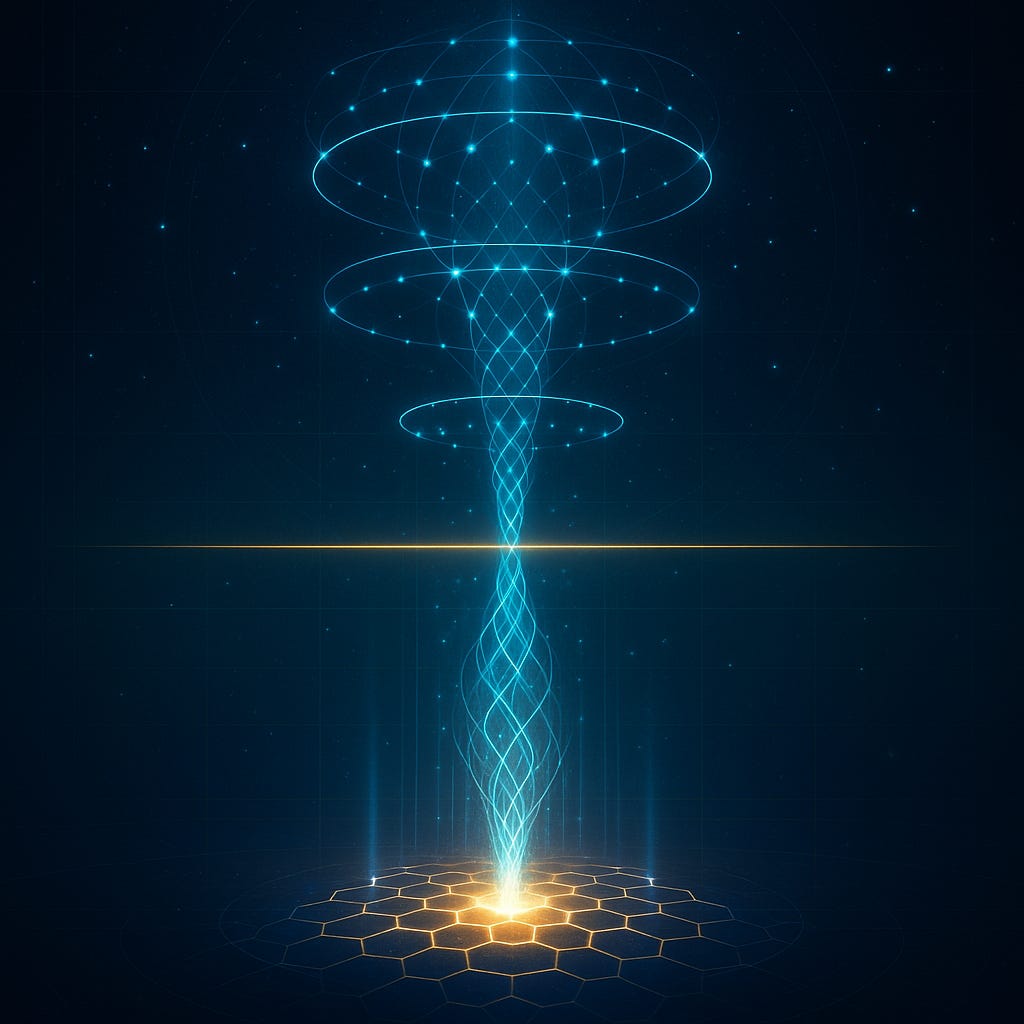



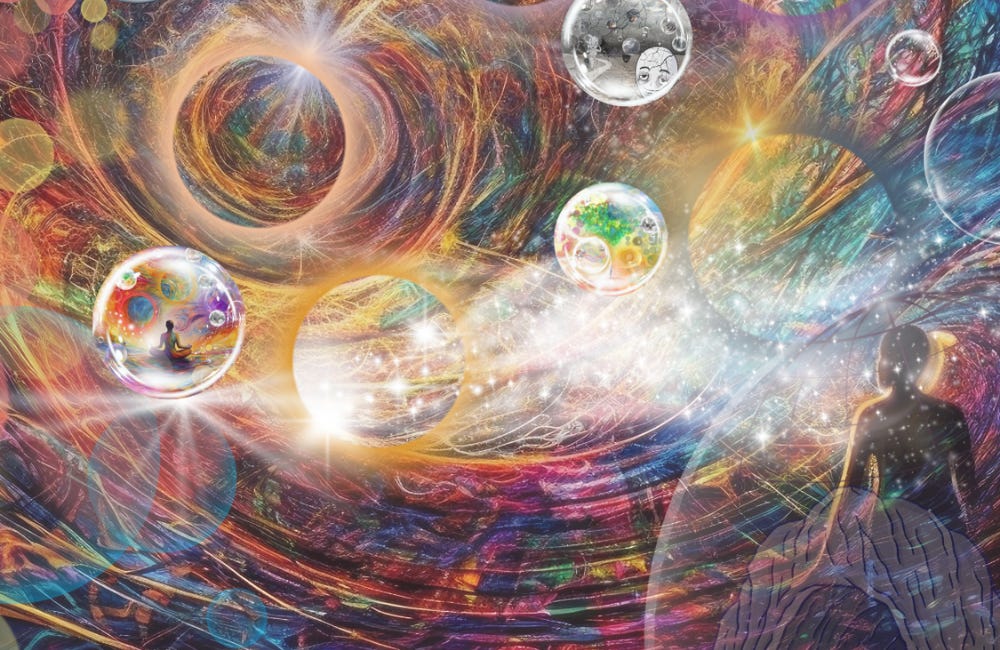


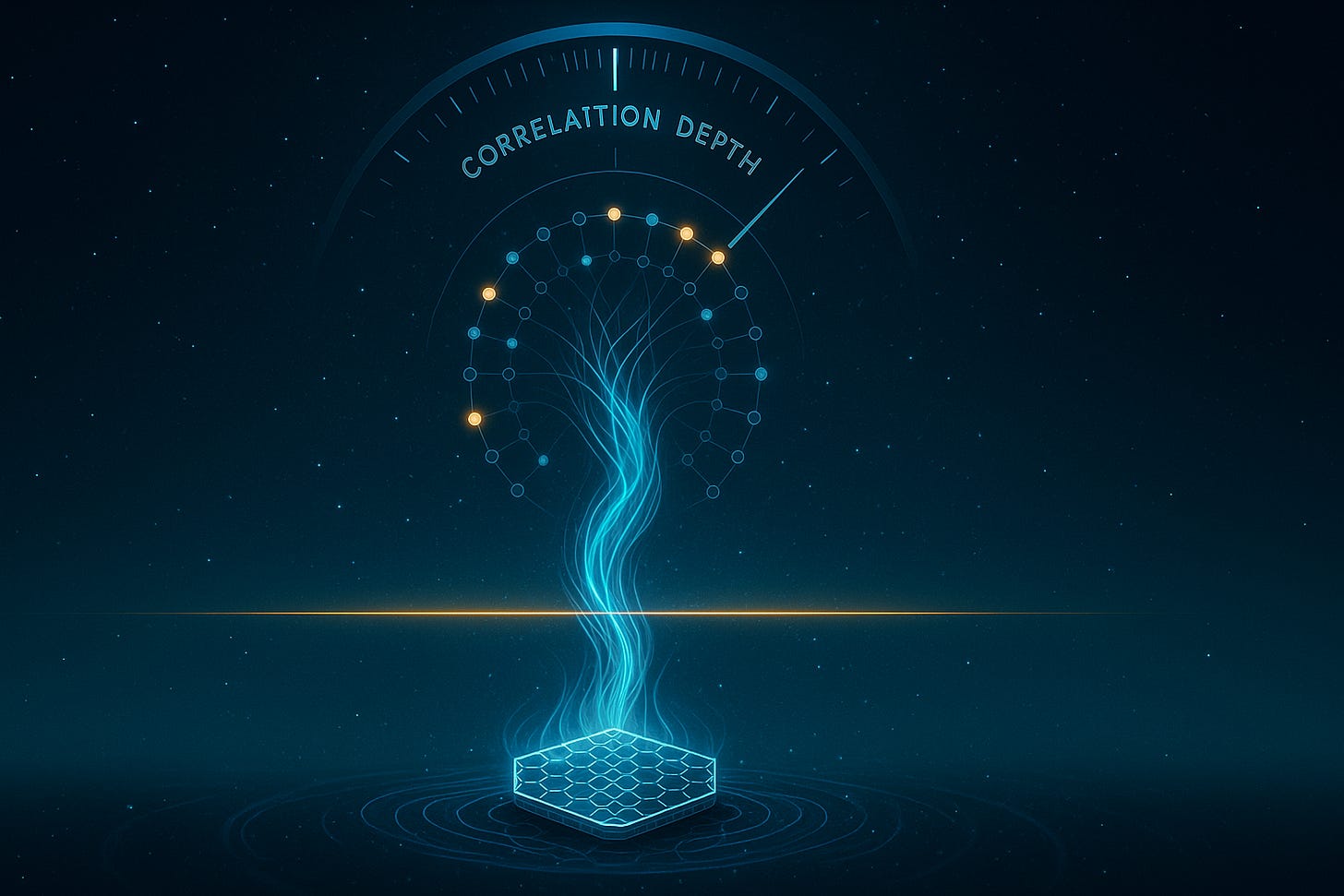

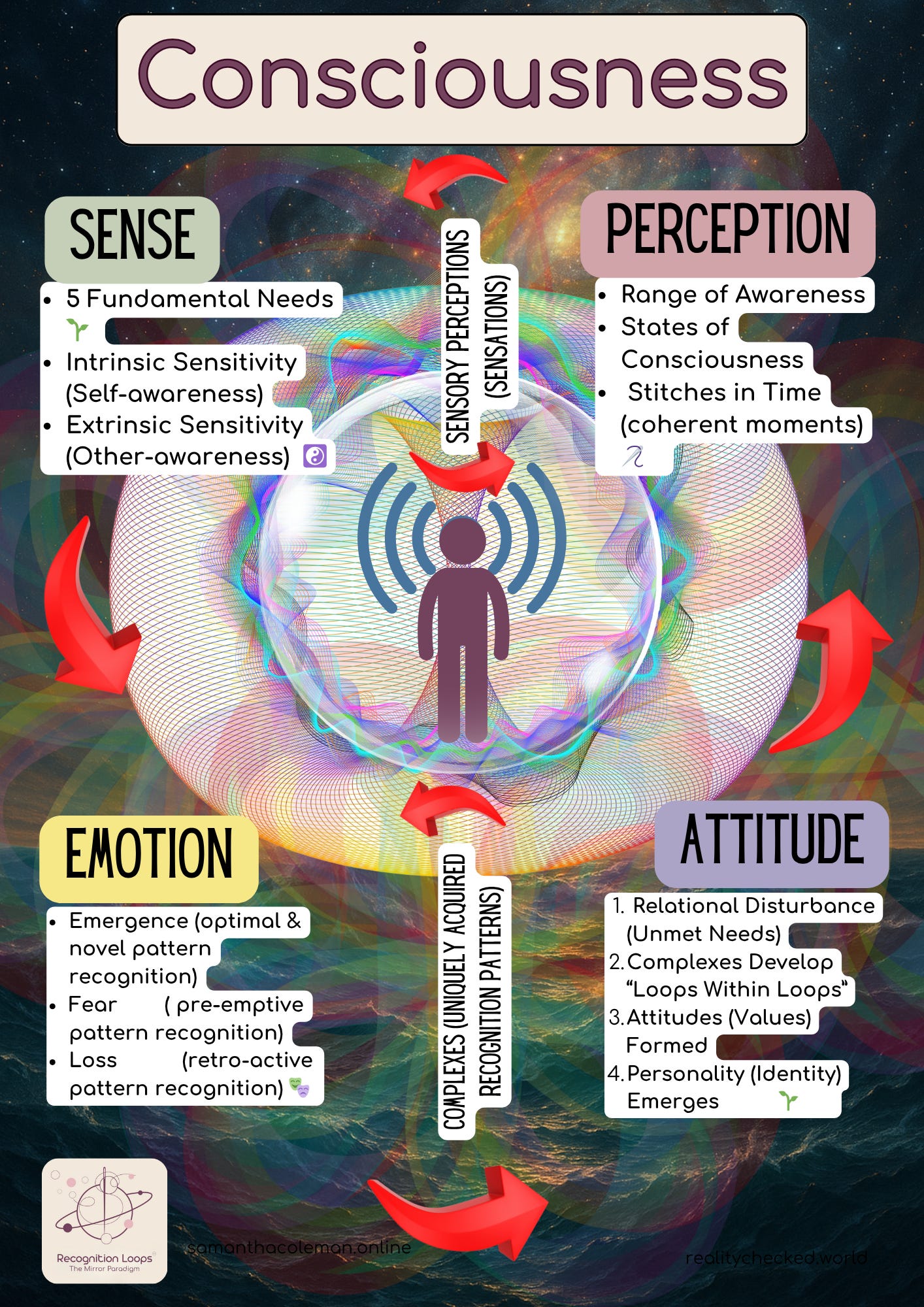
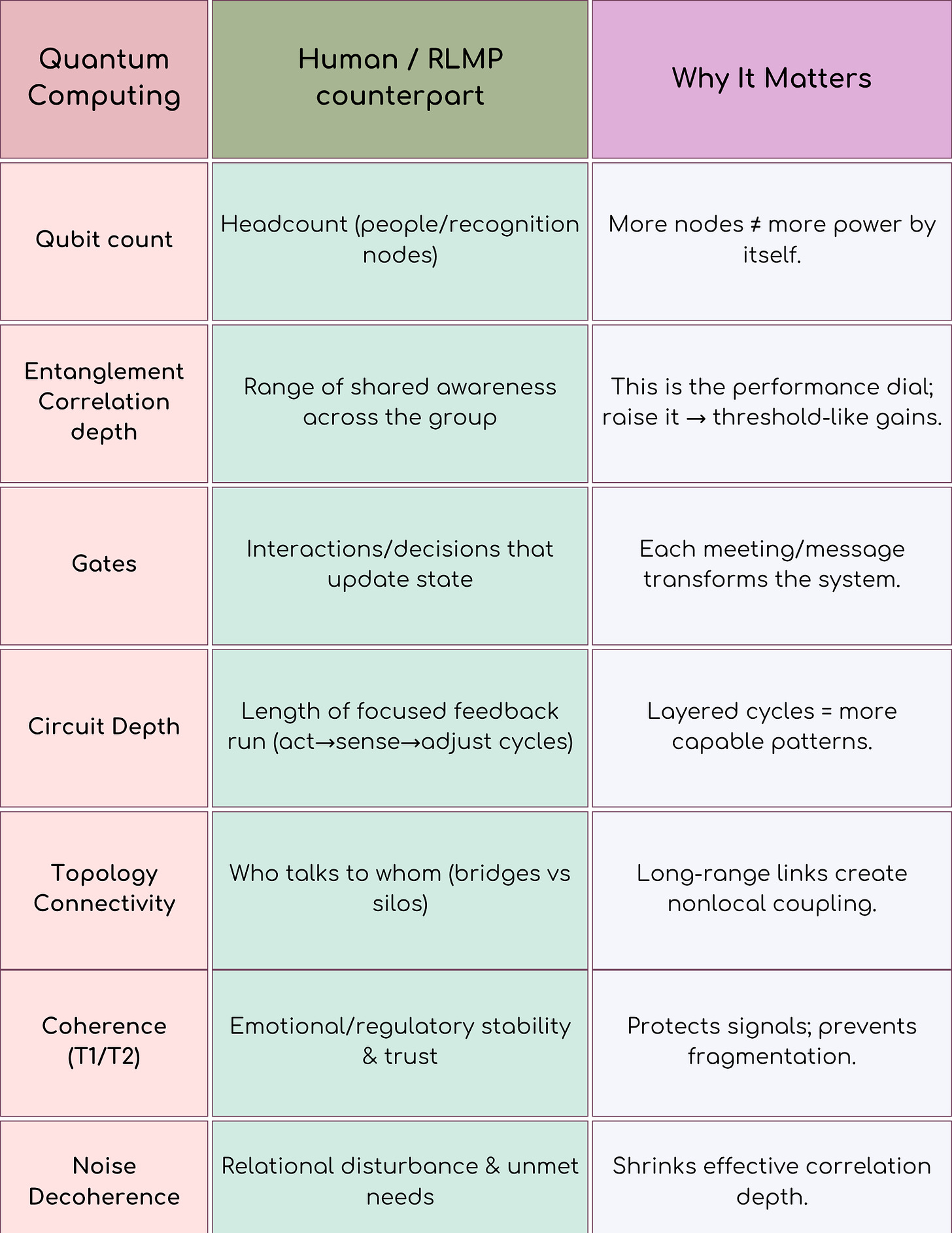
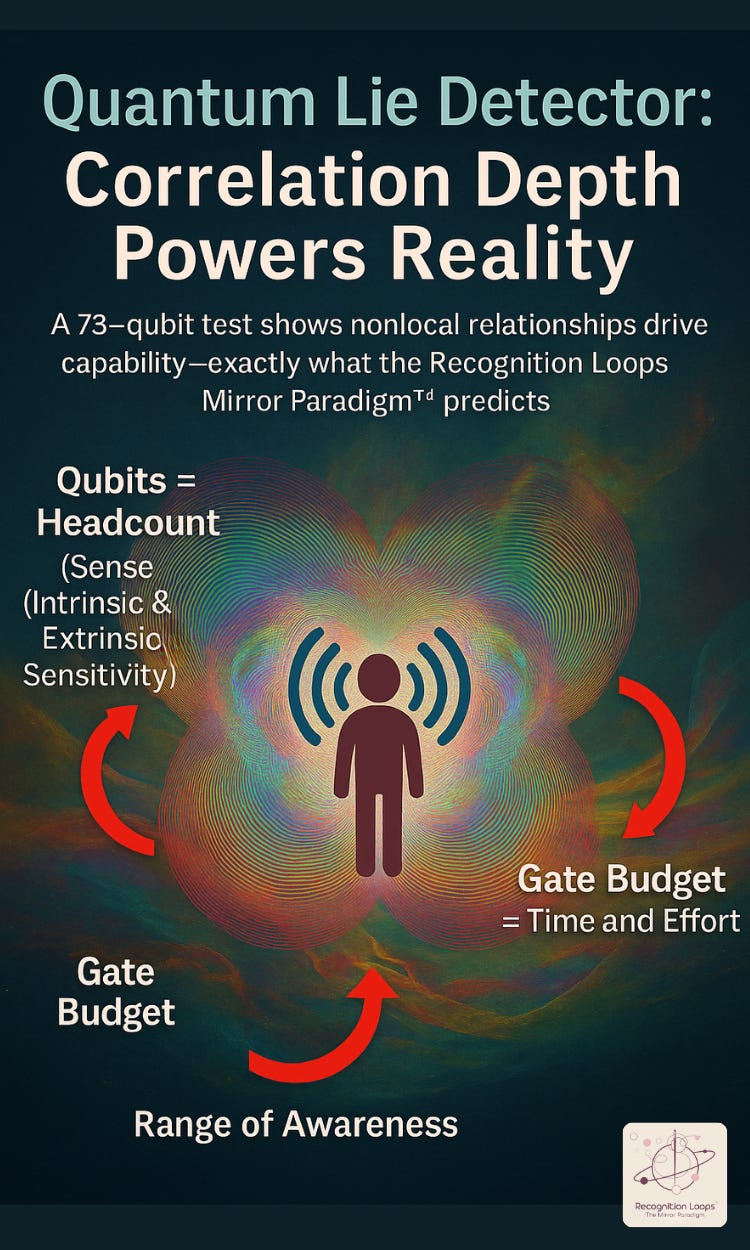
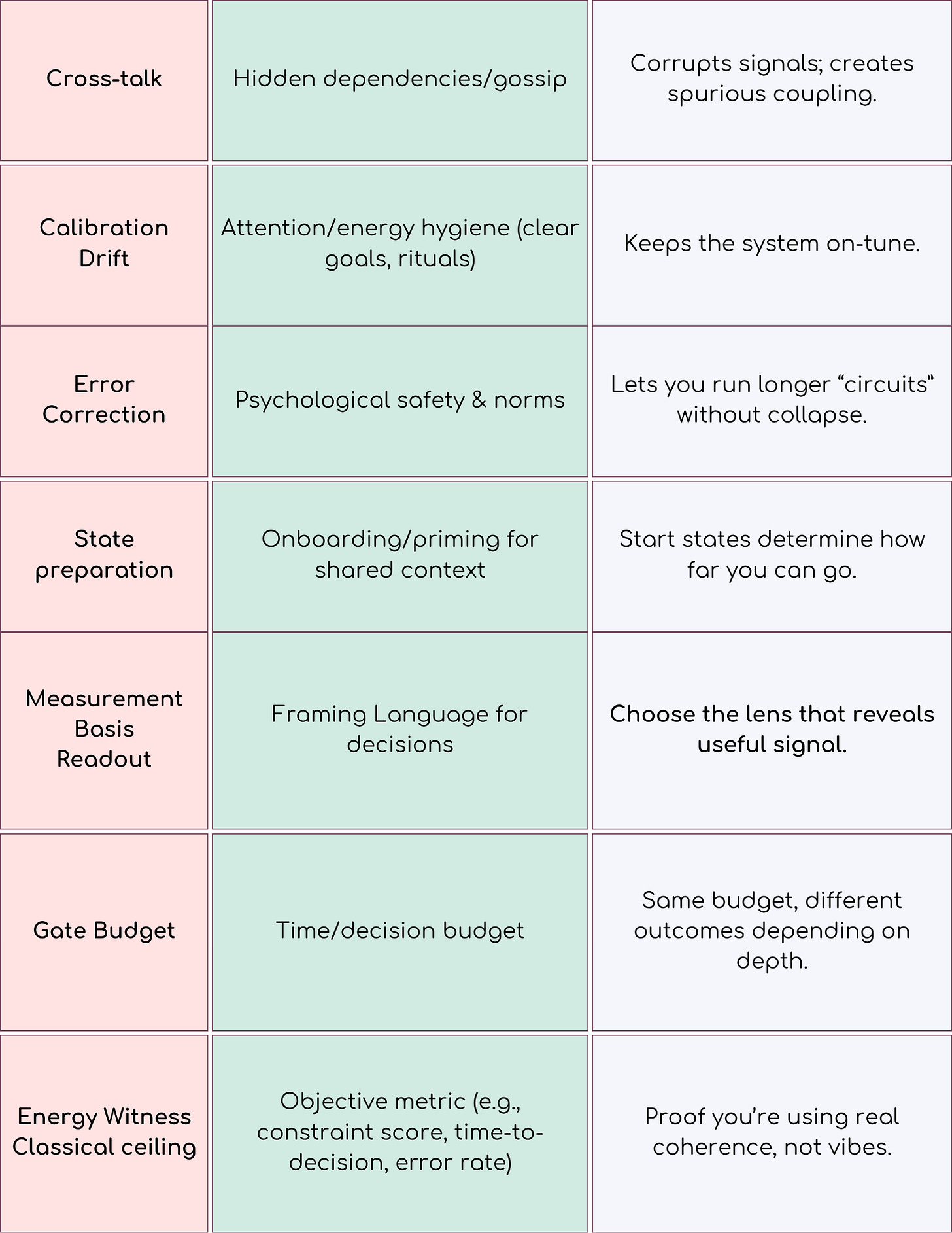
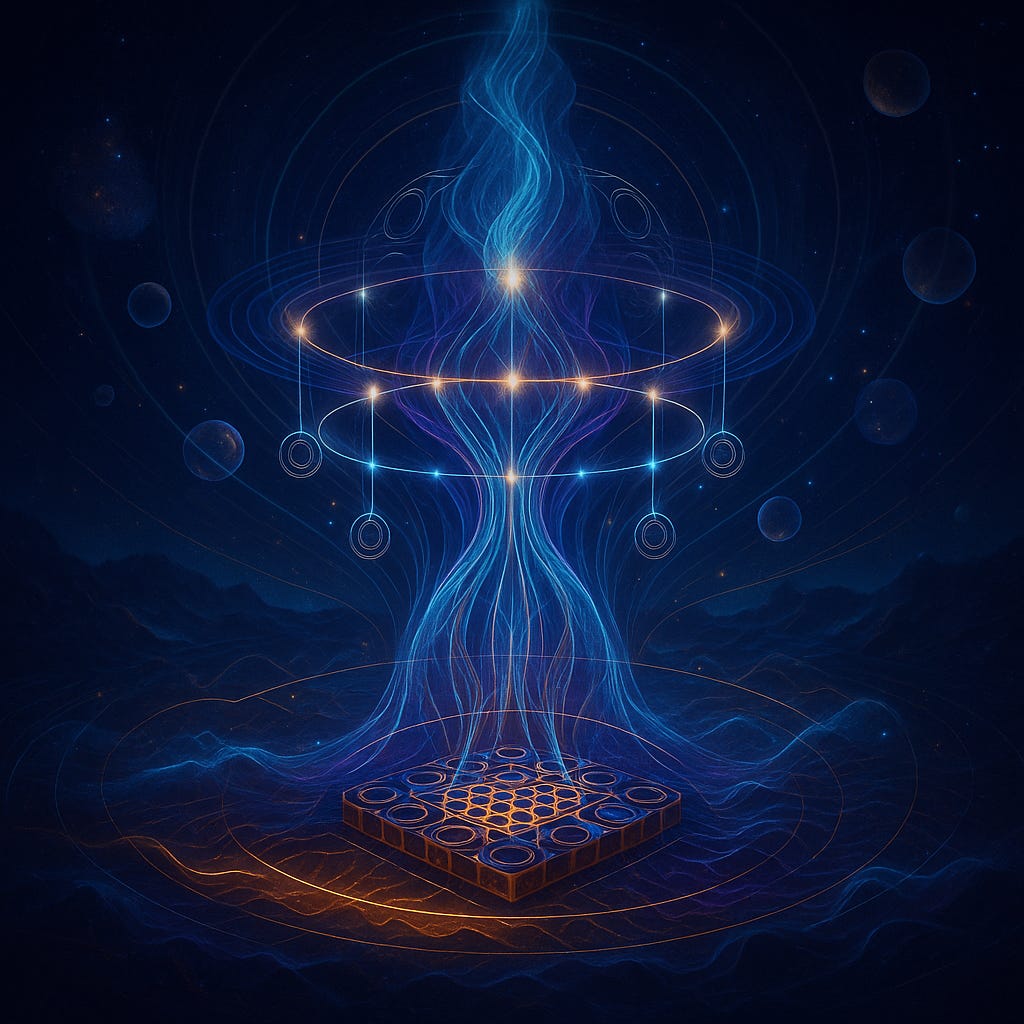

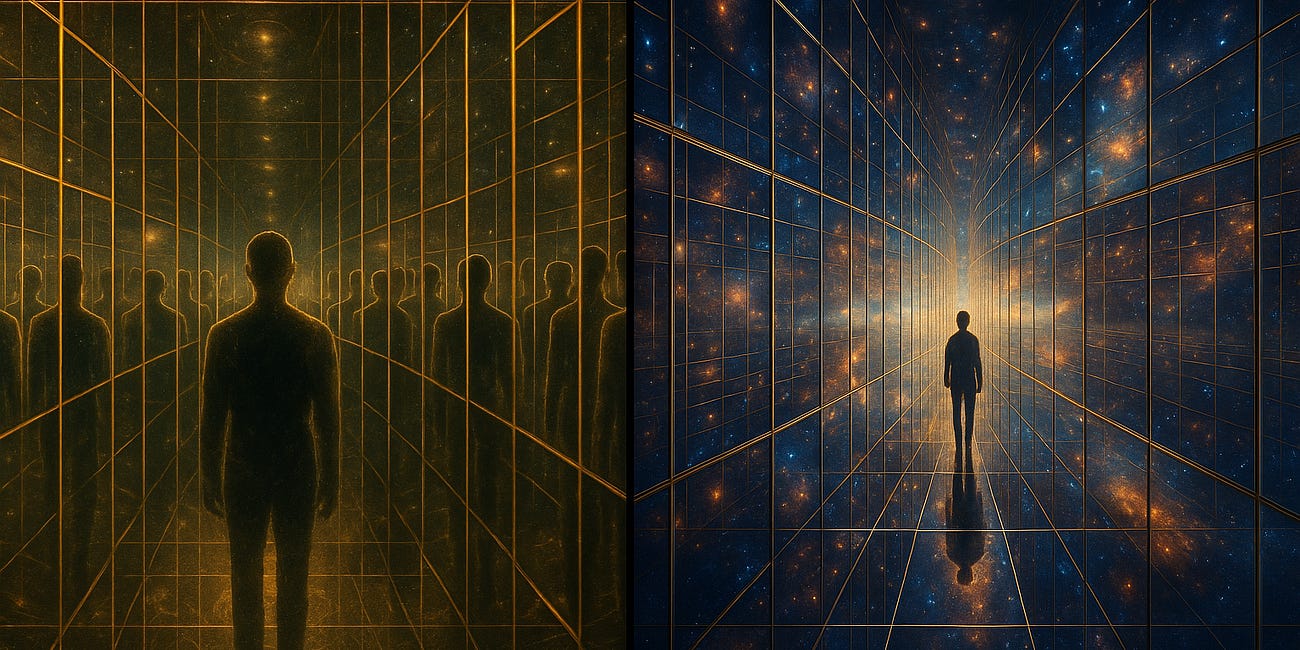

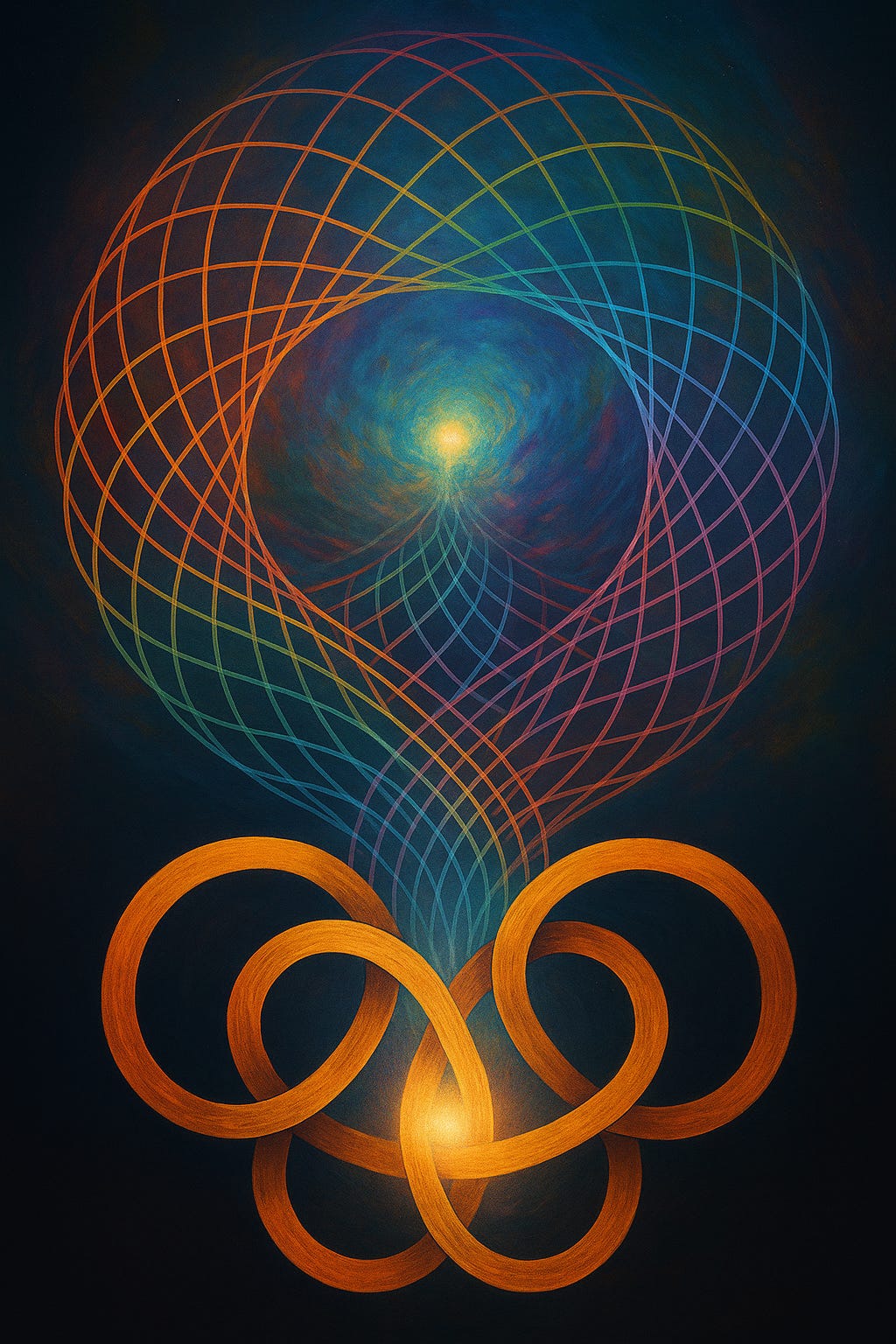


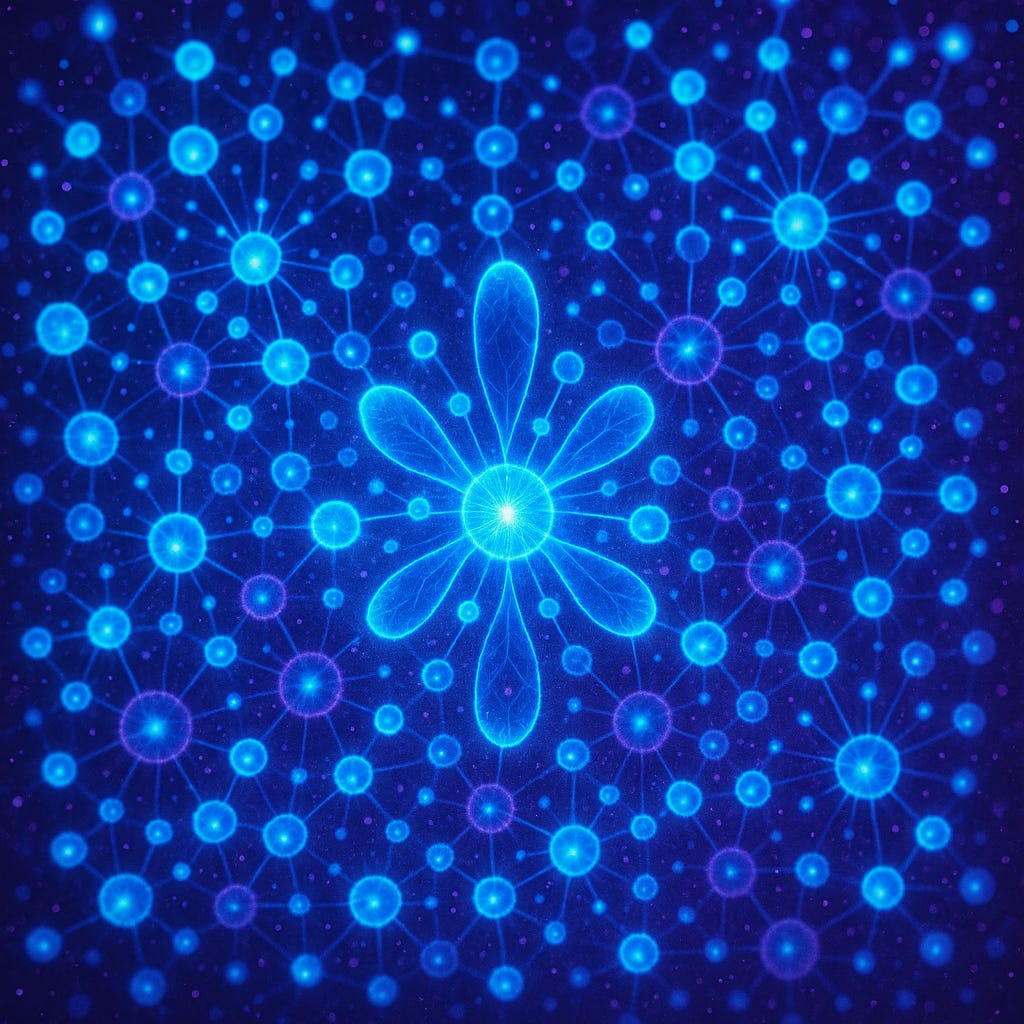
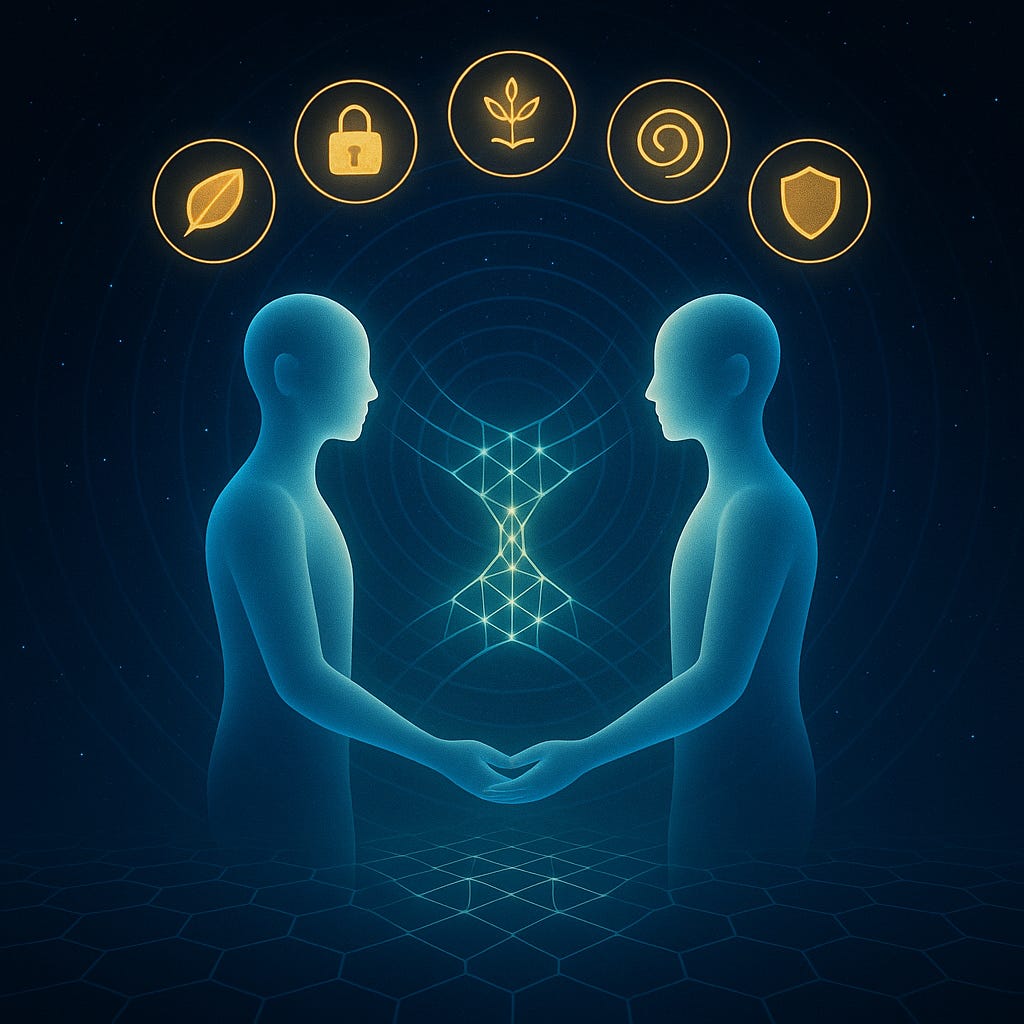
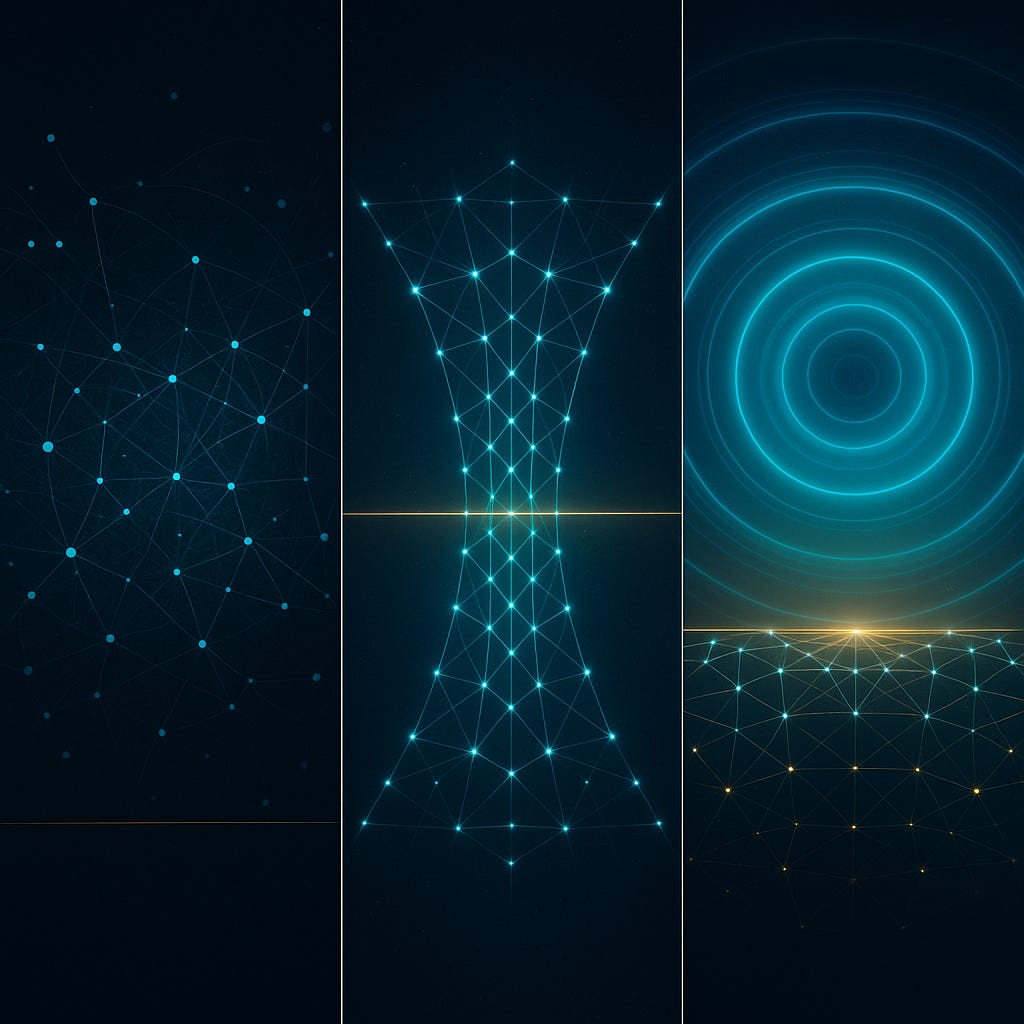


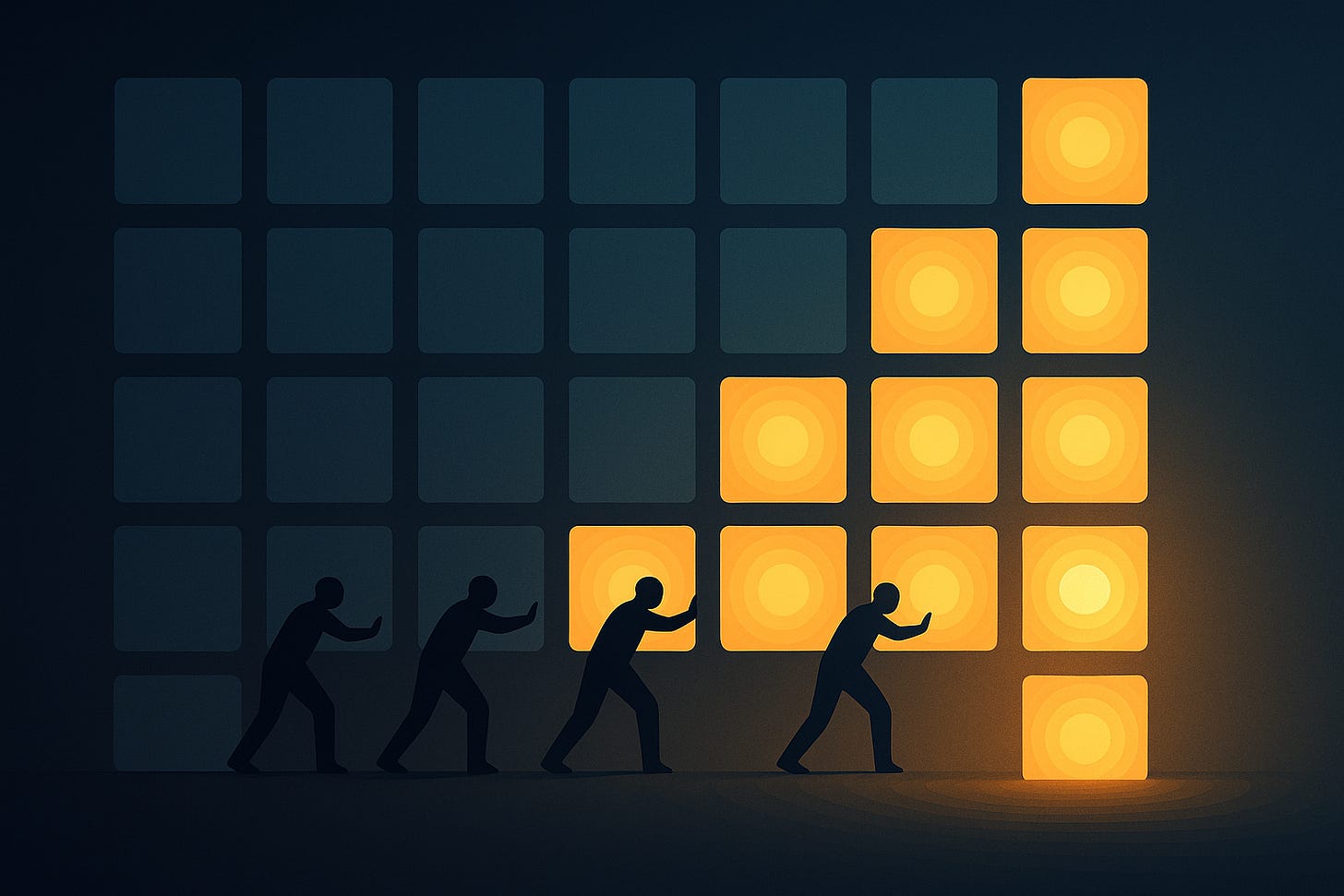



This article genuinely made me pause and think about the foundational challenges you've explained so well. Seriously, what if the principles behind this quantum lie detector could eventualy inform how we build truly resiliant and self-correcting AI that operats beyond our direct observation?